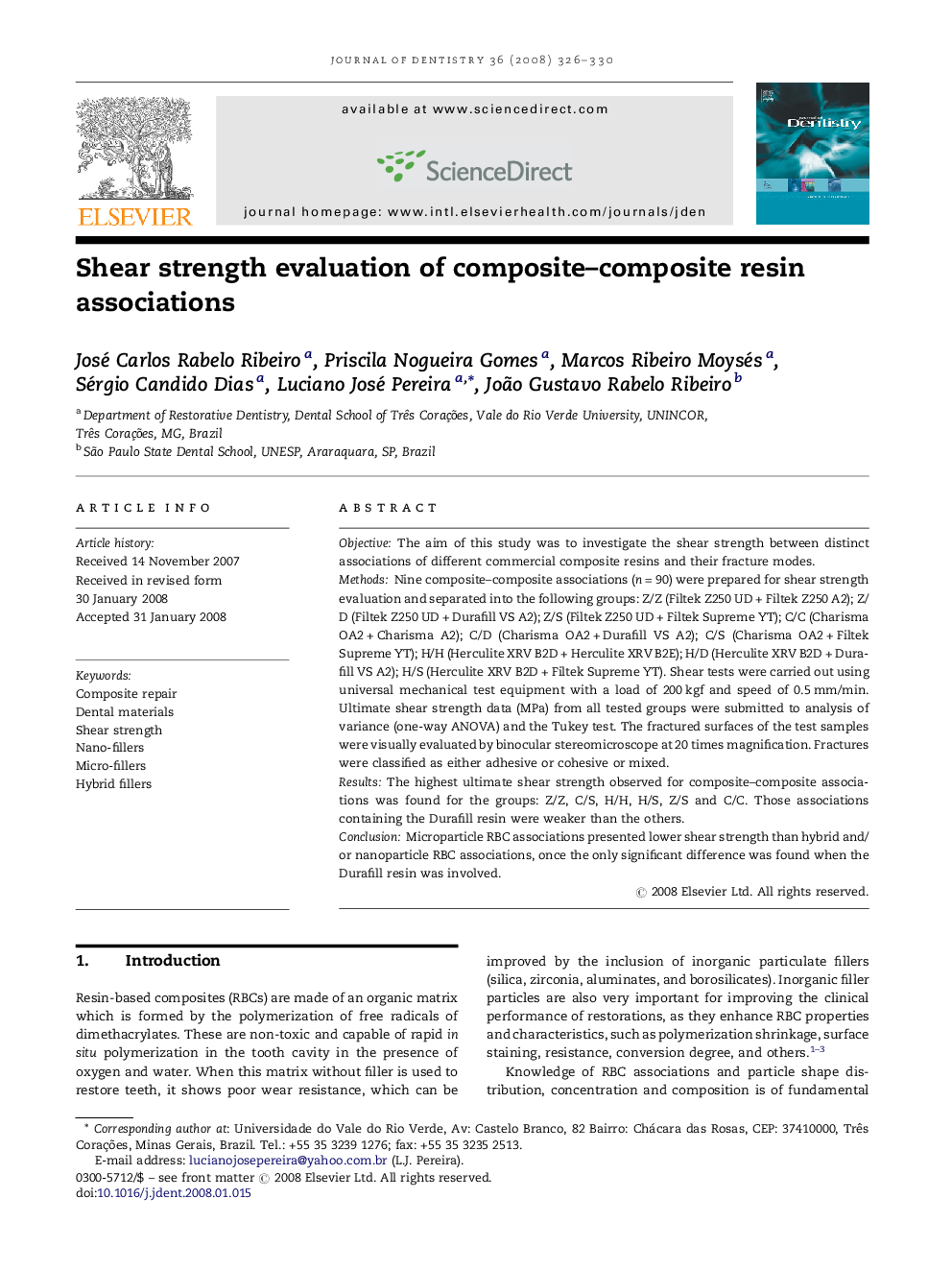| Article ID | Journal | Published Year | Pages | File Type |
|---|---|---|---|---|
| 3145918 | Journal of Dentistry | 2008 | 5 Pages |
ObjectiveThe aim of this study was to investigate the shear strength between distinct associations of different commercial composite resins and their fracture modes.MethodsNine composite–composite associations (n = 90) were prepared for shear strength evaluation and separated into the following groups: Z/Z (Filtek Z250 UD + Filtek Z250 A2); Z/D (Filtek Z250 UD + Durafill VS A2); Z/S (Filtek Z250 UD + Filtek Supreme YT); C/C (Charisma OA2 + Charisma A2); C/D (Charisma OA2 + Durafill VS A2); C/S (Charisma OA2 + Filtek Supreme YT); H/H (Herculite XRV B2D + Herculite XRV B2E); H/D (Herculite XRV B2D + Durafill VS A2); H/S (Herculite XRV B2D + Filtek Supreme YT). Shear tests were carried out using universal mechanical test equipment with a load of 200 kgf and speed of 0.5 mm/min. Ultimate shear strength data (MPa) from all tested groups were submitted to analysis of variance (one-way ANOVA) and the Tukey test. The fractured surfaces of the test samples were visually evaluated by binocular stereomicroscope at 20 times magnification. Fractures were classified as either adhesive or cohesive or mixed.ResultsThe highest ultimate shear strength observed for composite–composite associations was found for the groups: Z/Z, C/S, H/H, H/S, Z/S and C/C. Those associations containing the Durafill resin were weaker than the others.ConclusionMicroparticle RBC associations presented lower shear strength than hybrid and/or nanoparticle RBC associations, once the only significant difference was found when the Durafill resin was involved.
